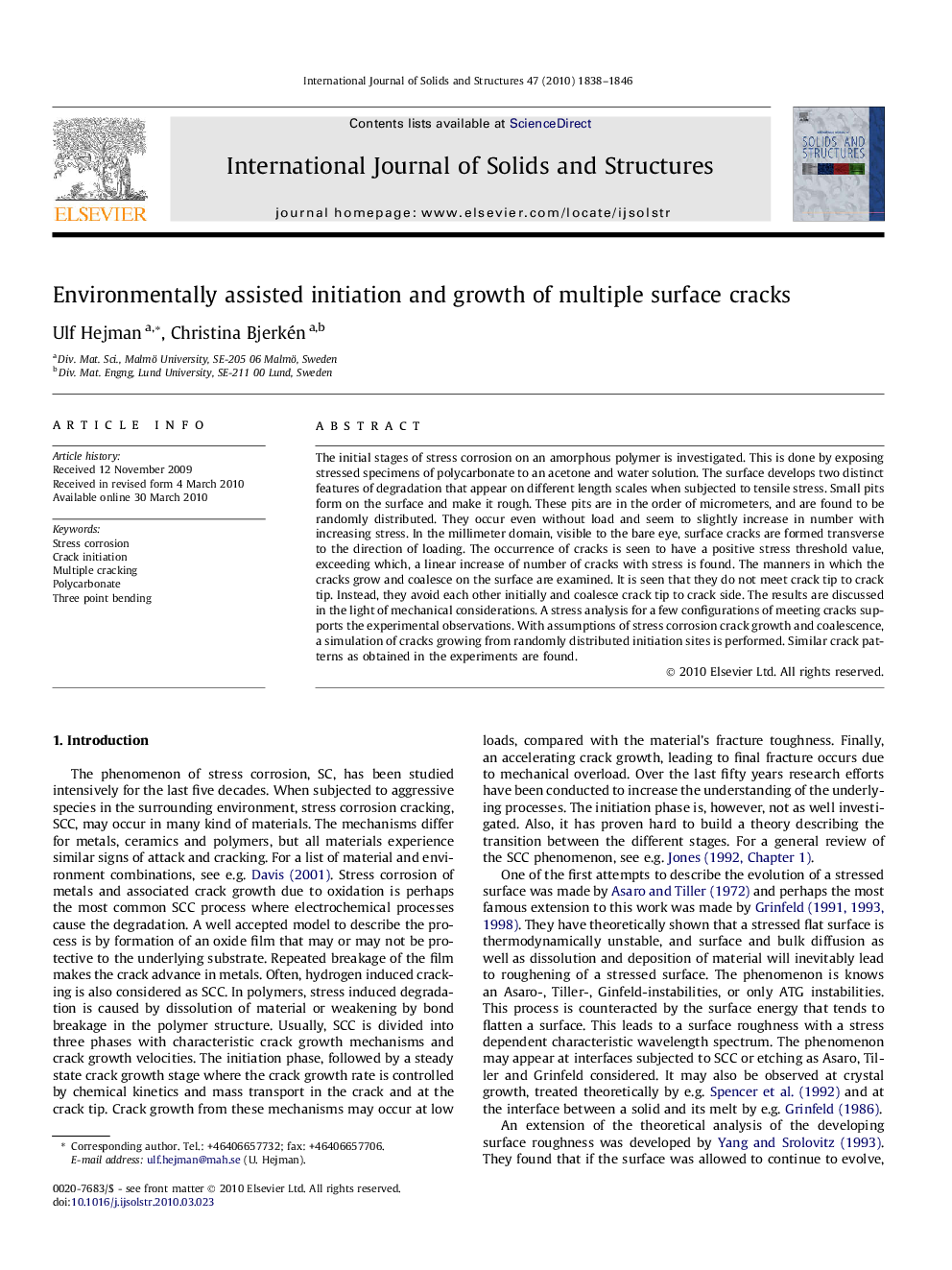| Article ID | Journal | Published Year | Pages | File Type |
|---|---|---|---|---|
| 278949 | International Journal of Solids and Structures | 2010 | 9 Pages |
The initial stages of stress corrosion on an amorphous polymer is investigated. This is done by exposing stressed specimens of polycarbonate to an acetone and water solution. The surface develops two distinct features of degradation that appear on different length scales when subjected to tensile stress. Small pits form on the surface and make it rough. These pits are in the order of micrometers, and are found to be randomly distributed. They occur even without load and seem to slightly increase in number with increasing stress. In the millimeter domain, visible to the bare eye, surface cracks are formed transverse to the direction of loading. The occurrence of cracks is seen to have a positive stress threshold value, exceeding which, a linear increase of number of cracks with stress is found. The manners in which the cracks grow and coalesce on the surface are examined. It is seen that they do not meet crack tip to crack tip. Instead, they avoid each other initially and coalesce crack tip to crack side. The results are discussed in the light of mechanical considerations. A stress analysis for a few configurations of meeting cracks supports the experimental observations. With assumptions of stress corrosion crack growth and coalescence, a simulation of cracks growing from randomly distributed initiation sites is performed. Similar crack patterns as obtained in the experiments are found.
